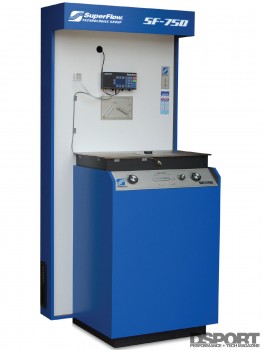Power in the RAW
Want to see how each intake did at a specific RPM, just take a look at the RAW data below. All of the tested intakes, with the exception of the HKS and Weapon R intake, were able to help the FR-S generate over 180 horsepower at the wheels after an EcuTek tuning session on the dyno. For reference, if 215 horsepower is produced at the flywheel, 182.75 horsepower would be measured at the wheels.

Aidan Says…
At DSPORT, we provide the best quantifiable and objective information possible so our readers can make informed purchases. Unfortunately, objective measures do not always tell the entire story. Sometimes a subjective set of eyes (or in this case, butt cheeks) can provide the missing bits of information. This intake shootout is a perfect example. After a week of not driving my car during the testing, I simply forgot how the FR-S felt prior to the tuning. Essentially, my butt- dyno lost its calibration.
Driving the “tuned” FR-S, I thought the car felt better, but I couldn’t swear to it. Unsure if these improvements were real or just the product of optimism, I traded cars with my roommate, Ai Takamura. She drives a Subaru BRZ with the same modifications as my FR-S, minus the tune. It took her less than a day to return with feedback, more like half an hour. The text I received read “this thing drives AWESOME!” This is precisely what can’t be told by charts, graphs and numbers alone. The car does not feel one hundred times faster, but power delivery feels much smoother and the power dip around 4,000 RPM feels all but gone. While the right intake and ECU tuning will deliver roughly 7.0-percent more peak power, it will significantly increase midrange torque for smoother acceleration.
After driving a non-tuned BRZ and the tuned FR-S, the difference was quite noticeable. The tuned FR-S delivered better response, improved acceleration and a tad bit more peak power.
The Missing Test
Making over 300 dyno runs for an intake test may seem a bit extreme. However, we wanted to deliver the most accurate and repeatable data to our readers. In retrospect, we would have liked to have conducted one additional round of testing. This round of testing would have been conducted on a flow bench. The flow bench would be able to measure the volumetric rate of airflow through the intake for a given amount of suction. If all of the intakes were measured at the same pressure differential, we could have determined which design actually flows the most cfm at that pressure.
Of course this just adds a piece to the puzzle. The highest flowing intake system may deliver the highest power or, perhaps, even the lowest horsepower on the dyno. Why? A growing number of factory intake systems are extremely well designed for flow. Aftermarket intake systems are generally reaping the largest power gains by changing the “tune.” The tune or engine calibration is affected by the signal from the mass air meter. The majority of aftermarket intake systems manipulate the mass air sensor signal to values that persuade the ECU to run more timing and a leaner air-fuel mixture. The result is more power. Soon, we’ll show this when our SuperFlow SF-750 flow bench arrives.
Scion FR-S/BRZ Intake Test: Pt 1 (Stock ECU)
• Intake Showcase (Part One)
AEM ETI INTAKE SYSTEM, BLITZ ADVANCED POWER AIR, HKS PREMIUM SUCTION, INJEN SP SERIES, K&N 69-SERIES TYPHOON, TAKEDA MOMENTUM, TRD PERFORMANCE AIR INTAKE, WEAPON-R SECRET WEAPON, APEXI POWER INTAKE FILTER, AVO TURBO WORLD SILICONE INLET COMBO PIPE, BLITZ SUS POWER FILTER LM, K&N REPLACEMENT AIR FILTER
Ecutek FR-S | Reprogramming the Power-Limiting Factory ECU
Scion FR-S/BRZ Intake Test: Pt 2 (EcuTek ECU)
• Intake Showcase (Part Two)
AEM ETI INTAKE SYSTEM, BLITZ ADVANCED POWER AIR, HKS PREMIUM SUCTION, INJEN SP SERIES, K&N 69-SERIES TYPHOON, TAKEDA MOMENTUM, TRD PERFORMANCE AIR INTAKE, WEAPON-R SECRET WEAPON



